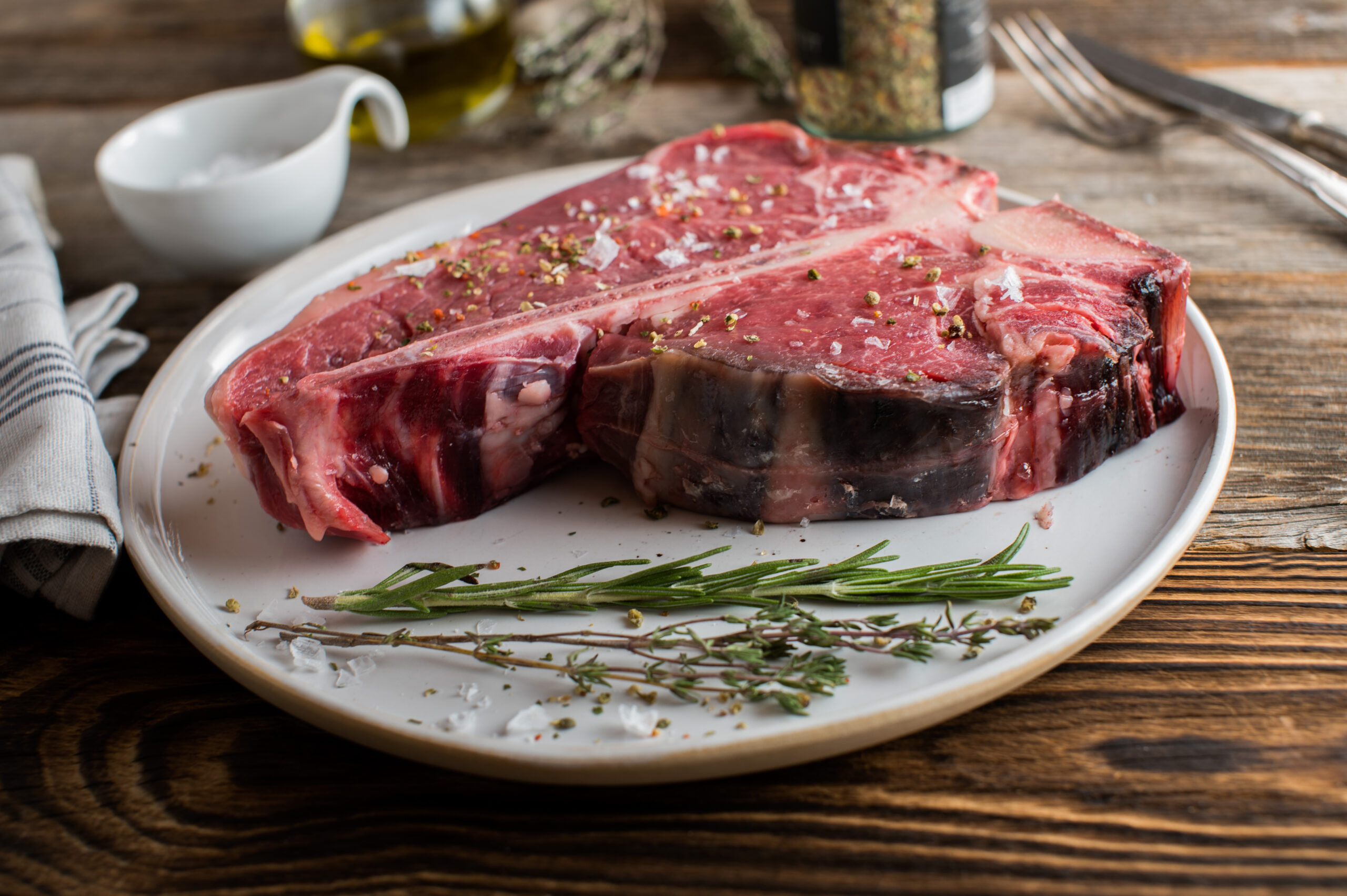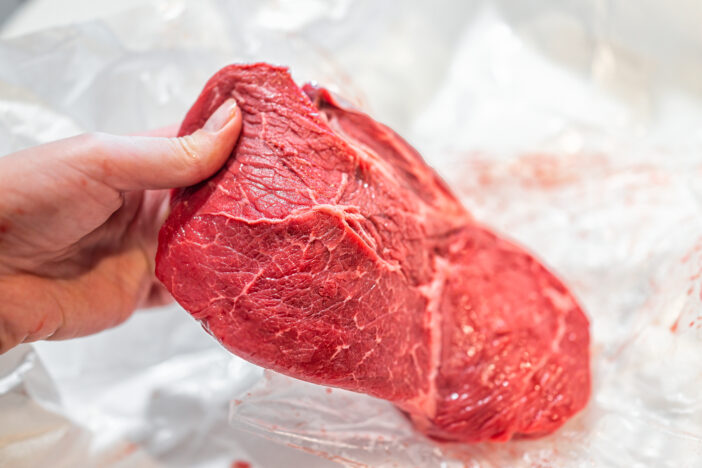5 Benefits of Grass-Fed vs Grain-Fed Beef for Health and the Environment
Grass-fed beef offers superior nutrition with omega-3s and vitamins, while grain-fed beef is more affordable and favored for its rich, buttery taste.

Choosing between grass-fed and grain-fed beef can impact your health and the environment. Understanding the benefits of each helps you make informed decisions at the grocery store.
Disclosure: As an Amazon Associate, this site earns from qualifying purchases. Thank you!
Exploring the Nutritional Differences

Dive into the nutritional disparities between grass-fed and grain-fed beef to make smarter choices.
Fatty Acid Profiles
Grass-fed beef is rich in omega-3 fatty acids, crucial for heart health. It contains up to five times more omega-3s than grain-fed beef. Conversely, grain-fed beef is higher in omega-6 fatty acids, which can lead to inflammation if consumed excessively.
Vitamin and Mineral Content
Grass-fed beef boasts higher levels of vitamins A and E. These vitamins support immune function and skin health. It also contains more antioxidants and vital minerals like zinc and iron. Grain-fed beef, while still nutritious, offers less of these beneficial vitamins and minerals.
Environmental Impact of Grass-Fed and Grain-Fed Beef
Effects on Land Use
Grass-fed beef requires more pasture land. Cattle graze freely, leading to the increased need for open spaces. Rotational grazing helps regenerate soil and promotes biodiversity. Grain-fed beef demands less land but strains resources. Cattle are confined, leading to potential overuse of grain crops and added stress on agricultural land.
Greenhouse Gas Emissions
Grass-fed beef typically has higher methane emissions. The longer lifespan of grass-fed cattle contributes to more methane over time. However, regenerative grazing practices can help offset this by enhancing soil carbon sequestration. Grain-fed beef produces significant methane in feedlots. The concentrated manure from confined cattle also emits high levels of greenhouse gases, particularly in large-scale operations.
Impact on Human Health

Heart Health Considerations
Grass-fed beef’s high omega-3 content helps reduce inflammation and supports heart health, according to a study by the Journal of Clinical Lipidology. It’s also lower in cholesterol and potentially lowers the risk of heart disease. In contrast, grain-fed beef, with higher omega-6 levels, contributes to inflammation and can negatively impact heart health when consumed in excess.
Influence on Body Weight and Metabolism
Studies suggest that grass-fed beef can enhance weight management. It’s leaner, has fewer calories, and helps in maintaining a healthy weight. The high conjugated linoleic acid (CLA) content aids metabolism, supporting fat loss. Grain-fed beef, on the other hand, is higher in total fat and calories, which might contribute to weight gain and insulin resistance when overconsumed.
Economic Factors

Cost Comparison for Consumers
Grass-fed beef typically costs more than grain-fed beef. You can expect to pay around $3-$5 more per pound for grass-fed options, with prices reflecting longer production times and higher farming costs. Grain-fed beef, fed on cheaper, high-energy grains, is more affordable, making it a more budget-friendly choice for most buyers. Despite the price difference, many consumers believe the health benefits of grass-fed beef justify the extra expense.
Implications for Farmers and Producers
Grass-fed beef farming requires more land and resources, leading to higher operational costs for farmers. You’ll find these higher costs passed on to consumers. Rotational grazing, though beneficial for the environment, demands significant investment in land and labor. Conversely, grain-fed beef production benefits from economies of scale, using feedlots and concentrated feed that reduce costs and increase output efficiency. Farmers can produce more grain-fed beef quicker and at a lower cost, meeting higher demand in a shorter timeframe.
Ethical and Animal Welfare Considerations

Living Conditions
Grass-fed cattle enjoy open pastures, allowing for natural behaviors like grazing and roaming. They’re less likely to experience overcrowding or unsanitary conditions. Grain-fed cattle, often raised in feedlots, face confinement and limited space. These restrictions can increase stress and susceptibility to disease.
Longevity and Quality of Life for the Animals
Grass-fed cows typically live longer, as they aren’t pushed to rapid weight gain. They also benefit from a more natural diet, reducing health issues linked to grain consumption. Grain-fed cows, bred for fast growth, often face a shorter lifespan and a higher incidence of diseases linked to their concentrated, high-energy diets.
Taste and Culinary Differences

Flavor Profiles
Grass-fed beef has a distinct earthy, gamey taste due to its varied diet. It’s often leaner, giving it a more robust and concentrated flavor. On the other hand, grain-fed beef tends to be marbled with fat, leading to a richer, buttery taste and a melt-in-your-mouth texture.
Cooking and Preparation Variations
Grass-fed beef cooks faster because of its lower fat content. To avoid toughness, use lower temperatures and shorter cooking times. Grain-fed beef, with its higher fat content, is more forgiving when cooked. It’s ideal for high-heat methods like grilling and broiling, resulting in a juicy, tender result.
Consumer Preferences and Trends

Market Demand Trends
Grass-fed beef is gaining popularity. It’s driven by increasing consumer demand for natural and organic products. In 2022, sales of grass-fed beef rose by 15%, indicating a shift towards eco-friendly and sustainable food options. Supermarkets and specialty stores are now dedicating more shelf space to grass-fed products, responding to this growing market.
Grain-fed beef still dominates. It’s cheaper to produce, resulting in lower prices for consumers. Availability in fast food and casual dining chains keeps grain-fed beef prevalent in everyday consumption. Despite the rising trend towards grass-fed, the grain-fed market maintains a stronghold due to its cost-effectiveness and ubiquitous presence.
Influence of Health Awareness on Consumer Choices
Health-conscious consumers prefer grass-fed beef. Rich in omega-3 fatty acids and antioxidants, grass-fed beef appeals to those prioritizing heart health and anti-inflammatory diets. A 2021 survey found that 62% of consumers choosing grass-fed beef cited health benefits as their primary reason.
Grain-fed beef attracts taste-driven buyers. Those less concerned with nutritional profiles and more focused on flavor often opt for grain-fed beef’s marbled, buttery texture. Nonetheless, a rising number of consumers are balancing taste and health, considering grass-fed beef for its leaner, nutrient-rich profile.
Frequently Asked Questions
What are the main nutritional differences between grass-fed and grain-fed beef?
Grass-fed beef is richer in omega-3 fatty acids, vitamins A and E, antioxidants, zinc, and iron compared to grain-fed beef. Grain-fed beef contains higher levels of omega-6 fatty acids and fewer essential nutrients.
How does grass-fed beef impact the environment compared to grain-fed beef?
Grass-fed beef requires more pasture land but can help reduce methane emissions through practices like rotational grazing. In contrast, grain-fed beef production significantly contributes to methane emissions from feedlots.
Are there ethical considerations in choosing between grass-fed and grain-fed beef?
Yes, grass-fed cattle generally have better living conditions compared to grain-fed cattle in feedlots. Grass-fed cattle often graze in open pastures, which aligns more closely with natural behaviors.
How does grass-fed and grain-fed beef differ in taste?
Grass-fed beef has a leaner, earthy taste, while grain-fed beef is marbled with fat, offering a richer, buttery flavor.
What are the cooking differences between grass-fed and grain-fed beef?
Grass-fed beef cooks faster due to its lower fat content, requiring careful attention to avoid overcooking. Grain-fed beef, with its higher fat content, is more forgiving and retains moisture well.
Why is there a growing demand for grass-fed beef?
The demand for grass-fed beef is increasing among health-conscious consumers who prioritize heart health and anti-inflammatory diets. Its eco-friendly and sustainable production methods also attract buyers.
Is grain-fed beef still popular despite the rising demand for grass-fed beef?
Yes, grain-fed beef remains dominant due to its lower production costs, widespread availability, and appeal to taste-driven buyers who prefer its richer, buttery taste.






